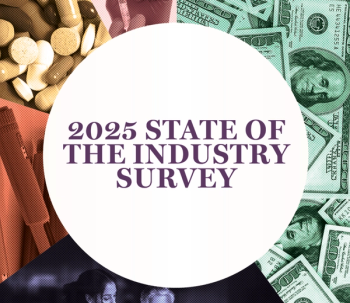
AI Helps Managed Care Identify High-Risk Patients Sooner and More Precisely | AMCP Nexus 2025
Key Takeaways
- AI models outperform traditional rule-based systems in identifying high-risk patients by integrating diverse data sources and continuously learning from various factors.
- A study showed AI models identified 41% of high-cost patients, compared to 29% by traditional methods, by incorporating claims, demographics, and social determinants of health.
AI revolutionizes member health risk identification, outperforming traditional models by integrating diverse data for proactive care in managed care settings.
Artificial intelligence (AI) can more accurately identify and predict member health risks than traditional rule-based systems, according to a poster presentation shared at the annual AMCP Nexus conference.
In managed care, knowing which members are most at risk for poor health outcomes is key to improving care coordination, reducing costs and starting early interventions. Traditionally, health plans use rule-based risk models with fixed thresholds, such as certain lab values or diagnosis counts, to identify high-risk patients.
However, these models tend to miss the complexity and changing nature of people’s health. The study’s lead author, Toshi Chintala, a junior data scientist at Datalink Software, suggests that AI offers a more flexible, data-driven approach that can keep learning from many different factors that affect risk.
A previous study found that
The AI model more accurately identified the top 5% of members by future spending—flagging 41% of high-cost patients compared to the 29% identified by the traditional model.
The authors of the previous study noted that integrating SDOH and real-time data allows for more precise, timely and actionable care management.
The new study presented at AMCP set out to test how well an AI model could outperform traditional rule-based methods, specifically the CMS-HCC risk adjustment model used widely across managed care. The team’s goal was to evaluate whether incorporating variables such as comorbidities, SDOH, demographics, lifestyle data, utilization patterns and care gaps could produce more precise and actionable risk groupings.
Using a large set of de-identified medical, pharmacy and clinical data, researchers conducted a retrospective analysis. They used Natural Language Processing (NLP) to pull information from long-term health records, including comorbidities, medications, HEDIS measures and social factors.
This unstructured data was then combined with structured data, such as lab results and healthcare use, to create complete health risk profiles. These profiles were tracked over time to calculate dynamic, personalized risk scores for each member.
When compared with the CMS-HCC model, results revealed the AI algorithm created more distinct and accurate risk groups. Members in the AI model’s high-risk group had an average yearly cost of $31,078, compared to $22,219 in the CMS-HCC group.
For medium- and low-risk members, the AI model also showed clearer separation, with less overlap between categories. Statistical analysis using the Davies-Bouldin Index showed that the AI model produced tighter and more defined risk clusters across all tiers.
The findings suggest AI-based stratification can help managed care organizations identify patients who need early intervention. By revealing hidden patterns in medical, behavioral and social data, AI can guide proactive care and better use of resources.
Chintala said the study shows that AI can move beyond fixed, rule-based systems to continuously learning models that adjust as patients’ health changes. However, some limitations exist, such as relying on past data and needing testing in other populations before wide use.
Looking at the big picture, this research shows AI has strong potential to improve managed care. Using AI to sort patients by risk in clinical workflows could make value-based care stronger and help find at-risk patients earlier and more accurately.
Newsletter
Get the latest industry news, event updates, and more from Managed healthcare Executive.






















































